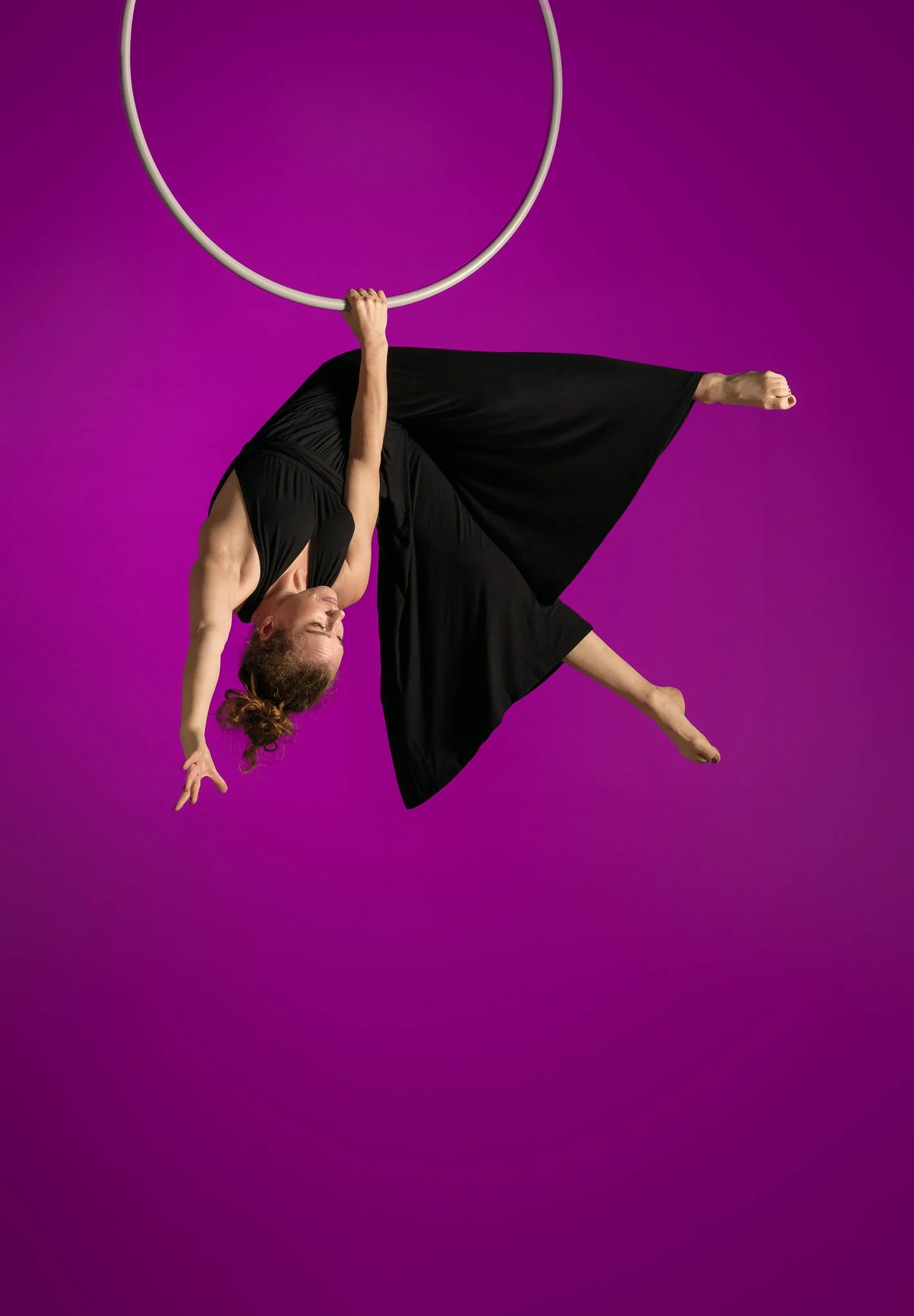4 Reasons Aerialists Need To Train Mobility
Kicking things off with an important question: Do you prioritise mobility training in your aerial practice?
Mobility is a word that gets thrown around a lot, and often it’s misrepresented in Instagram videos of people showing cool things they can do because they have good mobility (I used to do this), rather than movements and drills to help you achieve said mobility. But whether or not it’s fashionable right now, my belief from my own experiences as a coach and circus artist is that it’s relevant and important to include in training. And I believe it’s especially important if you’re learning and training anything as an adult.
I’ve talked about the importance of mobility training more generally for people who are active, and you can read about that right here. But now I want to share why it’s so important to train if you have any kind of physical movement practice, and specifically look at how it is vital for and enhances aerial.
1. Flexibility isn’t enough on it’s own.
There is a difference between flexibility and mobility. You need both. When you train mobility you’re building strength and control in your end range of motion, which is how far you can actively move part of your body e.g. through shoulder flexion or extension with no external force. So you’re not only able to access positions more safely but with actual intention and control.
In simple day to day life this might look like being able to lift your legs high enough to take the stairs two at a time. In aerial this might be the ability to actively hold a back balance on a hoop, and be fully in control of how much you’re allowing your back to arch. It’s also understanding that in this position you want your abs to stay engaged instead of just relaxing into a passive back bend. This helps massively with safety which leads me to the next point…
2. Mobility helps to reduce the risk of injury.
It’s very easy to push a flexy position too far. Like I mentioned, the stronger we are within our ranges of motion the easier and safer they are to control. This also helps with safely moving in and out of positions that require a lot of flexibility. If we know how to use the right muscles to support our bodies as we move into challenging poses we can maintain good form.
From a longevity perspective having more strength and control around how we move will also allow us to train for longer. It’s a way of keeping our bodies in good condition as well as reducing the risk of injury.
Of course you can’t avoid injury all the time. Sometimes we just have accidents (like me falling over and spraining my hand). But it definitely is worth including aspects of training that will reduce the risk and help us to feel more able and confident in our physical ability.
3. Mobility aids recovery.
Mobility is a great way to train your body when you want something that is a bit lower in intensity. Certain mobility drills can be challenging, but it’s still not the same as putting your body through aerial training, which is definitely hard on the body. Because it’s slower paced and encouraging blood flow through the body this is especially beneficial if you’re dealing with muscle soreness.
It can also help with calming the nervous system down, which helps the body to come out of fight or flight mode, relax, and recover and heal from hard training sessions.
4. In it for the long haul.
If your goals include being able to practice aerial for as long as possible, making sure you have good mobility will allow for this. Mobility training massively helps longevity. The phrase “use it or lose it” is completely true. It can be harder to maintain good movement as we age but having a solid mobility practice will help you to do this.
It’s something that you can practice at any age and is incredibly accessible. It will set you up well for still being able to train the things you want for the next 10, 20, 30 plus years. Put simply, it’s a way of taking care of your body.
There are probably more compelling reasons why having a mobility practice is important, but I wanted to touch on the ones that stand out most to be, and share how this relates to aerial.
If you’re curious about where to start with your mobility practice, my upcoming 4 week class series is focusing on mobility and movement. I’m taking some of my favourite mobility drills and locomotive movements to create classes that will leave your body feeling amazing, as well as educating you on exactly what you need for an effective mobility practice.
For all the details head here: Move and Mobilise: A 4 Week Class Series
